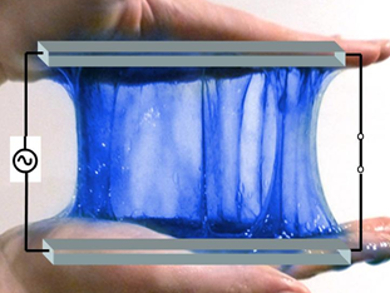Electrochromic devices (ECDs) can change their optical properties as a result of the electrochemical oxidation and reduction of an electrochromic material. The nature of such electrochromic materials can be quite broad, and the simplest configuration of an ECD involves two electrodes sandwiching an electrochromic mixture or electrolyte. Traditionally, electrolytes for ECDs are based on organic solvents, where all of the electroactive components are dissolved. As liquid electrolytes suffer from a number of problems including leakages, presence of bubbles, and solvent-related safety issues, recent research efforts have focused on solid electrolytes. However, these also suffer from many drawbacks.
Ibon Odriozola and collaegues, IK4-CIDETEC Research Center, Donostia-San Sebastián, Spain, have tried to bridge the gap between solid and liquid electrolytes by developing ECDs based on polyvinyl alcohol–borax slime. This type of “Masters of the Universe Slime”, first developed by the Mattel Toy Corporation in the 1970s, behaves as a viscoelastic fluid, owing to the reversible nature of the borate ester crosslinks. The novel slime-based ECD not only overcomes the limitations associated with both liquid and solid electrolytes, but also offers excellent wettability and transparency and achieves high performance in terms of optical contrast, switching time, and cyclability.
Easy-to-prepare and high-performance slime-based ECDs represent potential candidates for a number of industrial applications, including smart windows for buildings and vehicles, displays, anti-glare rearview mirrors in cars, and smart windows for energy-efficient architecture.
- Polyvinyl Alcohol–Borax Slime as Promising Polyelectrolyte for High-Performance, Easy-to-Make Electrochromic Devices,
Yolanda Alesanco, Jesús Palenzuela, Ana Viñuales, Germán Cabañero, Hans J. Grande, Ibon Odriozola,
ChemElectroChem 2014.
DOI: 10.1002/celc.201402265




